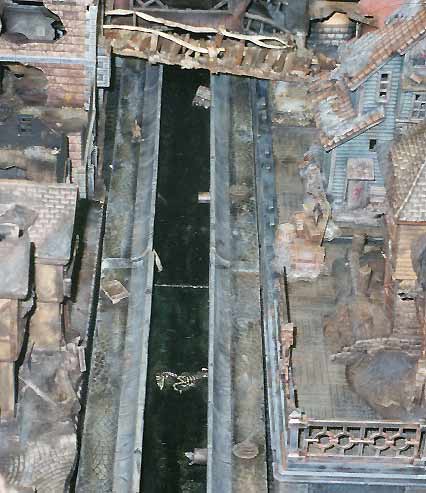

 |
The angle pieces were a pain to make, as I wanted the width of the river to match up at the ends, so I had to build in a slight angle at one end of the piece so everything would match up. The two angle pieces are identical, so I can arrange them in sequence to form a wide, 90 turn (as seen here), or put them end to end with a straight section between to form a jog. |
 |
Here you can see the river pieces nestled in between some of the foundation base plates. The end result is that the river looks like it is below ground level, even though everything's sitting on top of the table. The river sections are detailed with discarded crates and drums, half a horse skeleton, grates made of orc shields with slots cut in them, drain pipes made from brass pipe couplers, and the occasional stray rat. |

I primed the pieces black and used drybrushing and sponge painting to bring out the stone work. I used greys on the raised edge, but more earth tones on the stone for contrast. The "water" was painted with various shades of green, then coated over with a layer of Woodland Scenics instant water. The dark colors help add to the sense of depth.